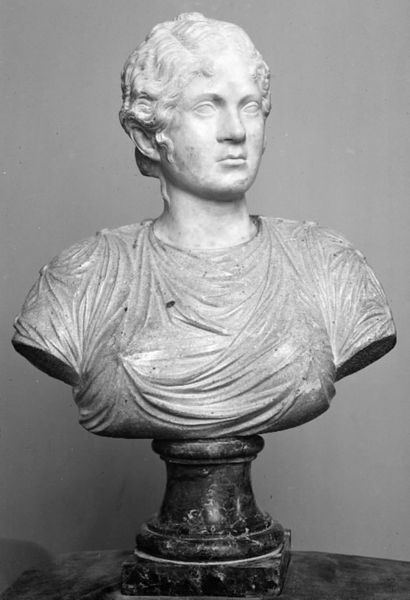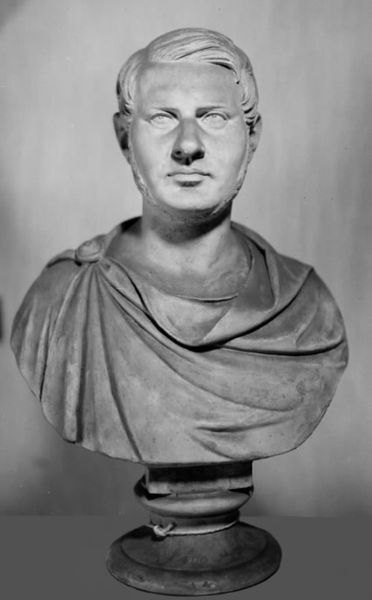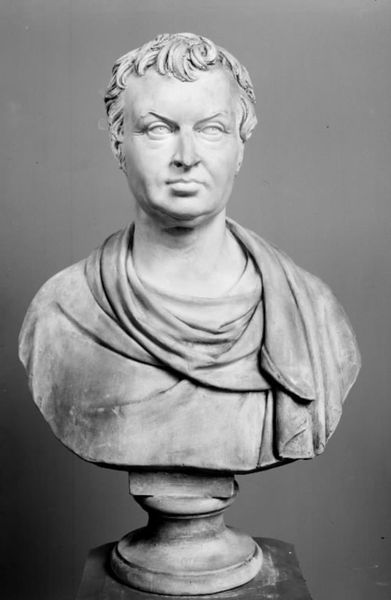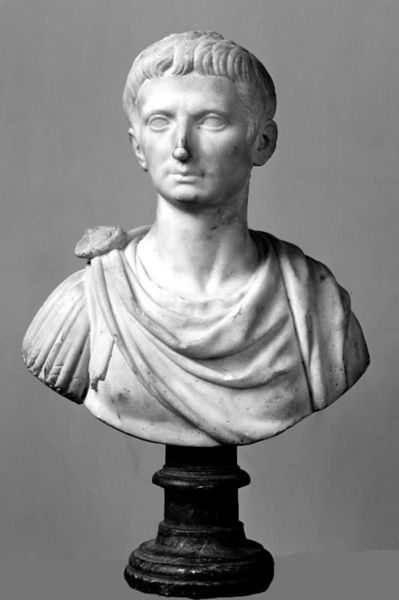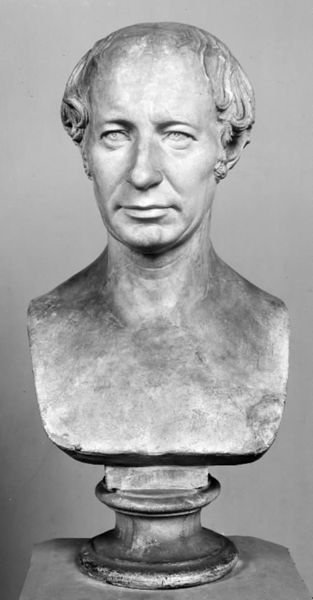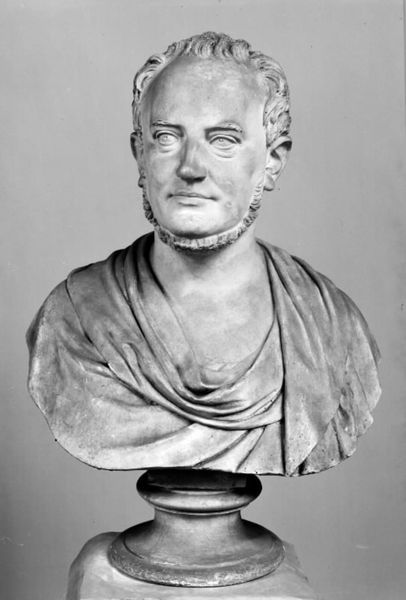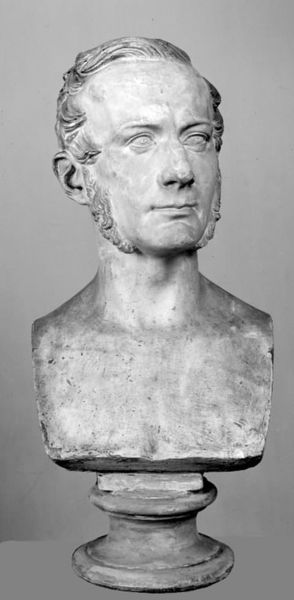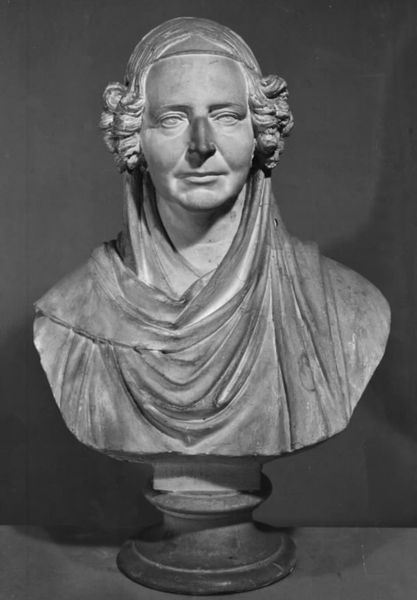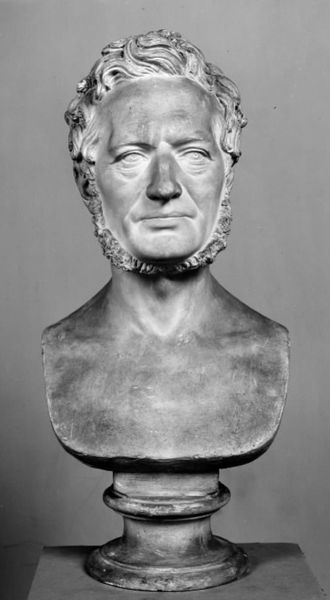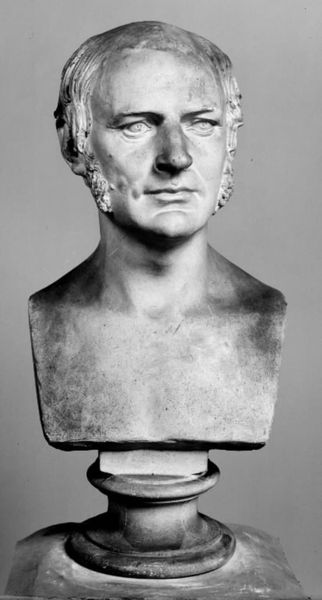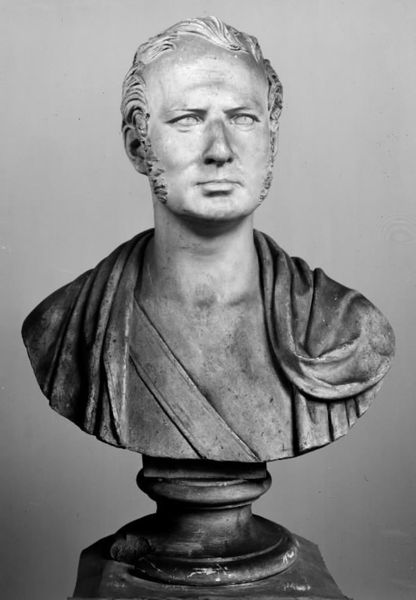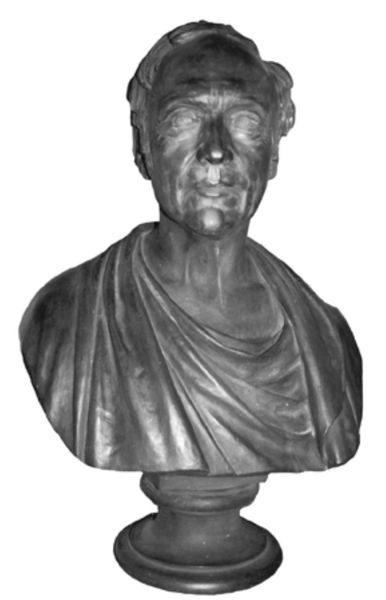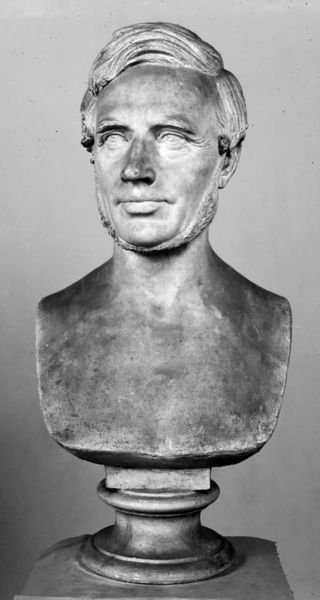
sculpture, marble
#
portrait
#
neoclacissism
#
sculpture
#
classical-realism
#
sculpture
#
marble
Dimensions: 71 cm (height) (Netto)
Curator: There's a certain somberness about this bust. It feels like a study in stoicism, doesn't it? The hard marble gives it this permanent almost resigned quality. Editor: We’re looking at a marble sculpture titled "Grevinde Louise Danner, f. Rasmussen" created by H.W. Bissen in 1853. The sculpture resides at the SMK, Statens Museum for Kunst. It offers a captivating insight into the life of its subject and the socio-political climate in which it was made. Curator: Absolutely. The context is everything here. Louise Danner was a commoner who became the morganatic wife of King Frederick VII of Denmark. This union challenged the rigid social hierarchies of the time. That pendant she wears becomes particularly significant. Is that an image of the King? Editor: I believe so. Bissen was a master of Neoclassical style, as you can see in the idealized form and restrained emotion. Yet, there is also a realism present, particularly in the subtle lines etched on her face, that speaks to the complexities of her life. Curator: I find it compelling how sculpture could serve as a form of both propaganda and quiet resistance. It represents the official acceptance and validation of someone who came from the margins. Was this commissioned by the Royal family or perhaps a more progressive patron? Editor: It's worth considering how museums and the act of preservation themselves play into solidifying a certain historical narrative. Placing it here highlights the important public role art has in shaping and often reshaping history. Curator: Exactly! Danner wasn't just a royal spouse; she was an activist in her own right, advocating for social reform and women's rights. Does the work represent her power or confine her legacy? The gaze seems fixed yet, is she reflecting agency or duty? Editor: Bissen's skill allowed the capturing of an individual, while placing her within a much wider web of power, class and early modern media and image creation. The very existence of this bust is, in itself, a powerful commentary. Curator: A final pondering; in a museum filled with Kings and Queens, how vital that Danner takes her deserved and earned position. The context is still vital to engage with her struggles as we grapple with today's complex ideas of equality.
Comments
No comments
Be the first to comment and join the conversation on the ultimate creative platform.
